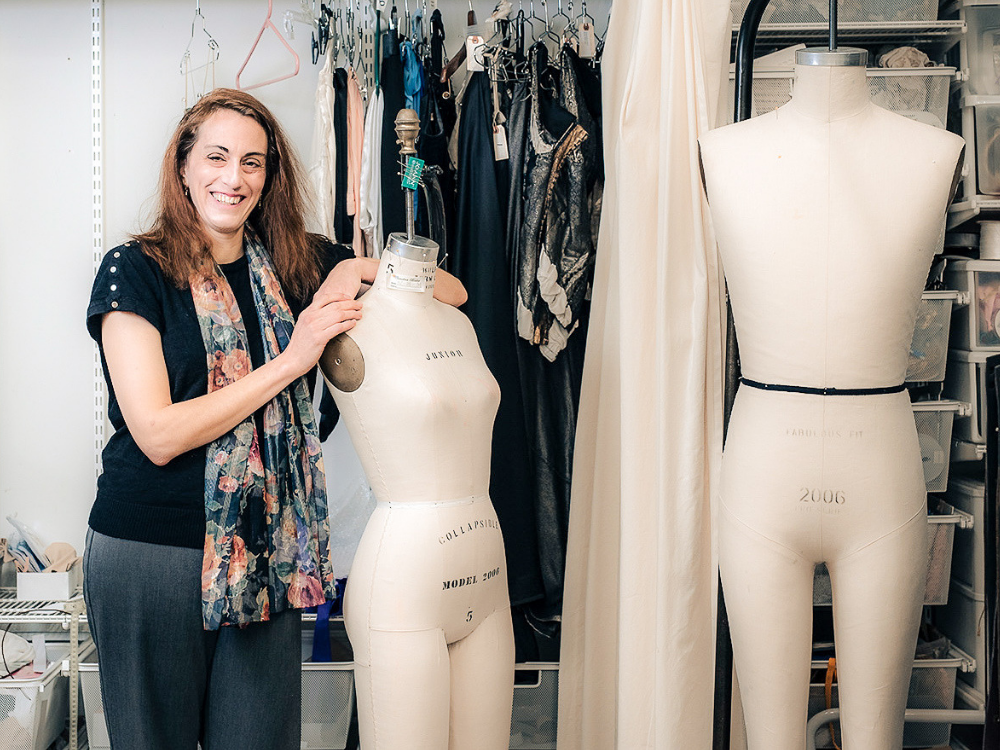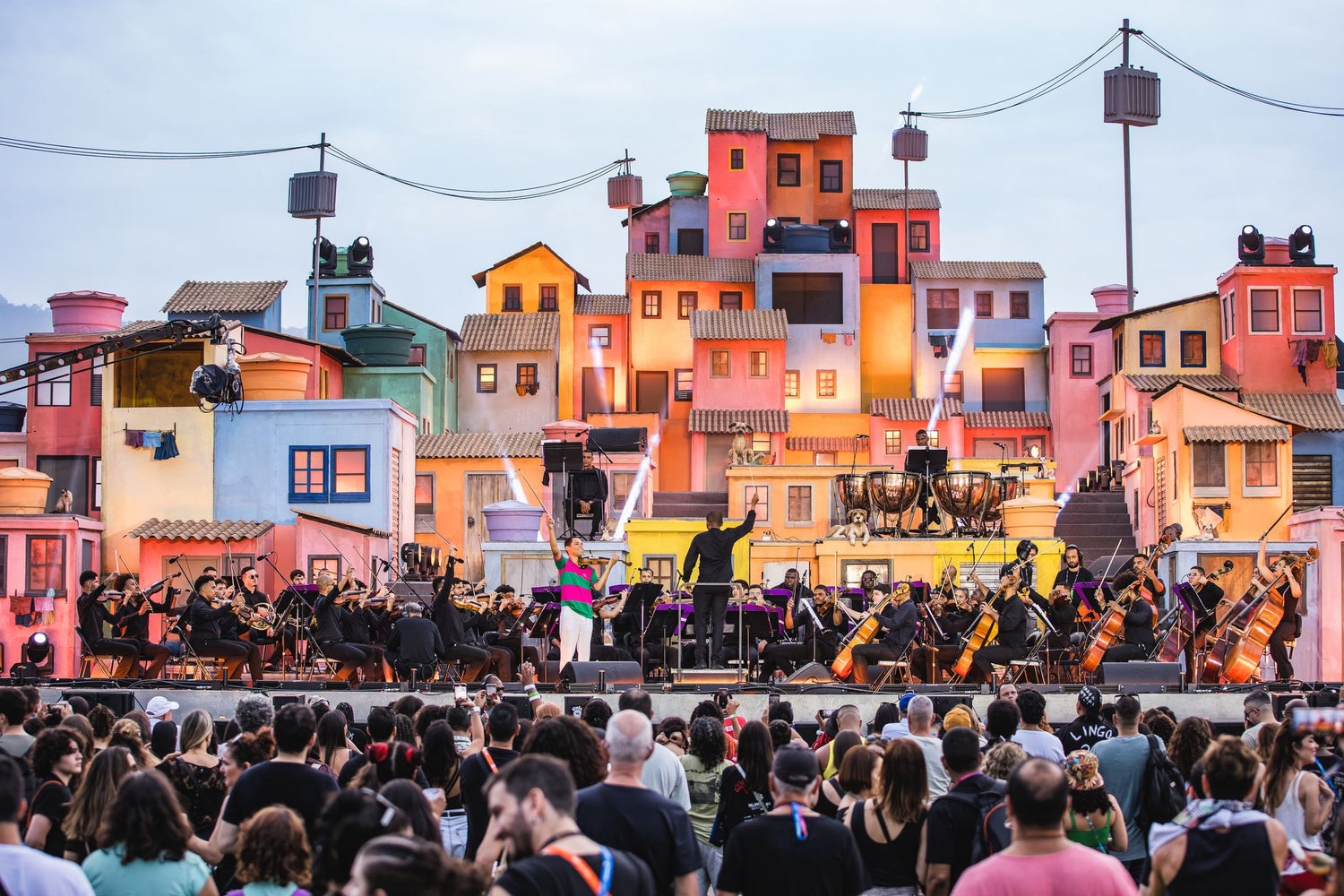As costume director and resident costume designer of the Carolina Ballet, Kerri Martinsen elevates the dancers’ artistry — one outfit at a time.

By Rachel Watkins
Ask Kerri Martinsen what she loves most about her work at the Carolina Ballet in Raleigh, North Carolina and it’s the problem-solving sequences that she’s tasked with almost every day — how to combine modern technology with classical technique to find new or better ways of showcasing a dancer’s body and beauty of movement. In fact, she knows she’s done a good job if the audience doesn’t really notice her work much at all.
Of course, there are the times when the costume does take center stage, as in the balletic drama, Macbeth. When the Carolina Ballet performed it a few years ago, Kerri discovered an innovative way to portray the iconic blood stain on Lady Macbeth’s white nightgown — without the use of messy stage blood. She remembered seeing mermaid sequins that completely flip over from one color to another when smoothed in different directions, so she ordered a yard of the fabric and spray-painted one side white and the other side bloody red — and voila!
It all requires talent, ingenuity, and precision — and a good dose of patience, too. Luckily, that’s just what Kerri has. We were honored to chat with her about how she landed in the world of dance, and here’s what she had to say.
Tell us more about the Carolina Ballet
The ballet is in its 21st season right now. We just wrapped up Monet Impressions, which included a story ballet based on artist Claude Monet’s life and a second act based on his famous garden paintings: Picnic on the Grass and The Gardens of Giverny. In May, we have the beloved Swan Lake where The Chamber Orchestra of The Triangle is accompanying the ballet.
Tell us about how you got started — how does one become a costume director?
When I was growing up, the Missoula Children’s Theatre, a children’s theater that visits small towns in the upper Midwest, made an impression on me. They brought a truck of costumes and props and gave children and young adults the chance to get involved in a theater experience they might not otherwise have. My mom taught me how to sew, and in high school I stuck around the theater and helped out in their costume shop.
I went to The University of South Dakota for my Bachelor’s in costume design. But, I knew I didn’t want to be a costume designer. So, I went to The University of North Carolina at Chapel Hill for my Master’s in Costume Technology. It was intentionally not a design program. Instead, we learned how to make the clothes; how to make patterns. We studied patterns of old modes of dress and learned why they were constructed how they were constructed. We learned how to research — and we learned all about period styles. That said, it is a highly specialized degree that makes me really good at about five jobs in the Raleigh area.
After graduation, I went to the Washington National Opera. My job there was finding everyone’s measurements and photos and then working with the drapers who make the costumes. After that, I was a draper at a for-profit touring company, then I had kids and took a break for awhile. Theater can be crazy! But, now, I’m in my ninth season at Carolina Ballet and I love it.
" We studied patterns of old modes of dress and learned why they were constructed how they were constructed. "

Photo Credit: Armes Photography
Most difficult costume project?
Getting inside the head of choreographers and translating their vision onstage through costumes can be a challenging task sometimes. But, one of the most difficult projects was probably our Composers program.
For this program, we featured composers through time, beginning in the medieval age — everyone from Bach, to Mozart, to Beethoven, and more. There was a huge variety of music and we had to figure out how to make the production look cohesive and not like a recital. We used the costumes as the continuing thread to weave it all together. We also used a muted color story that incorporated lots of sepia tones, with the principal character having a bolder accent color on top of the sepia. It actually worked quite well. Only at the end did we add the color black into the performance with musical note skirts. For another production, we used a flower accessory to tie the different characters together.
What’s the typical work day for a costume director?
It’s not everything you might think. I do a lot of paperwork; I order a lot of things online and work with vendors; I process invoices — a lot of it is normal day-to-day business. Halfway through the day, I will pattern a look and figure out what we need to do next with the costumes. We also regularly go through a lot of fittings and make alterations.
But, no day is really ever the same. We are a very small shop; there are just four of us here full-time. We have a principal seamstress; she’ll clean up the patterns and designs for me, among other things. Then, we have a wardrobe supervisor and assistant who conduct most of the fittings. House crews help with the actual dressing during performances. That’s especially important for performances like The Nutcracker, where there are a lot of costumes.
" At the end of the day, though, it is my job to make the audience not notice the costumes — and that’s the real challenge and reward! "
What is the favorite part about your job?
I love to figure out problems; it’s an adrenaline rush. Of course, it’s never a lot of fun to fix a last-minute issue in the 12 hours between the dress rehearsal and the real performance. But sometimes it happens. Sourcing fabrics can be a real treasure hunt, too, especially if you’re trying to match one that was purchased years ago. It’s incredibly fun — and maybe a bit frustrating, too.
At the end of the day, though, it is my job to make the audience not notice the costumes — and that’s the real challenge and reward! If you are noticing something about the costume, then I have not done my job. There are a few exceptions of course - the extravagance of some performances — like the ball gowns in Romeo and Juliet, for example. But usually, you’re watching the beauty of the dance movement.

What is your advice for those wanting to get into the field of costume direction or costume design?
Go places and meet people! Connections are really important. Learn as much as you can from everyone you can. Everyone will know something you don’t… I’m still learning new and old tricks myself and I’ve been doing this job for more than 20 years. But, at the end of the day, this business is really about who you know. It’s a very small industry and who you’ve worked with in the past can help you get your next job. Also, don’t be afraid to specialize. Find out what you like to do and do it.
When friends and family visit Raleigh, where are some of the places where you go?
Haha, I don’t get out much… but, in all seriousness, we live in a pretty great place here in Raleigh. We are two-and-a-half hours from the beach and two-and-a-half hours from the mountains. So, a day trip to either of those is amazing. We also have really great restaurants in town — I’m partial to sushi. Oh, and there’s Broadway-quality programming, the symphony, and our ballet company, of course. It’s very cultural here.
" The first time a dancer danced in Coregami, it was like night and day. "
Why Coregami?
Well, working in the ballet is different than working in theater. Character development is key in theater and costumes inform that. But, in ballet, movement takes 100% priority. The costume will change if the dancer can’t do what they need to do. We really have to get creative sometimes — especially with period looks — so the dancers can still have the range of motion they need on stage.
All that to say, tux shirts and jackets have always been a tough point for the guys. We add gussets where we can, but usually we just have to buy the tux shirts bigger to accommodate the movement. When we found Coregami, it was a revelation. The first time a dancer danced in Coregami, it was like night and day. Both the way the shirts are cut and the fabric that is used allow for full range of motion — but with the look of a tux shirt. It’s a wonderful blend of both worlds.
Also, we never have to worry about sweat or pit stains with Coregami. I know we’re going to use them for The Nutcracker year in and year out. They make the dancers so much more comfortable. Finding a product like Coregami is rare in my line of work; it’s a staple that will work like a dream and stand the test of time without modifications.
" Finding a product like Coregami is rare in my line of work "

Photo Credit: Armes Photography





